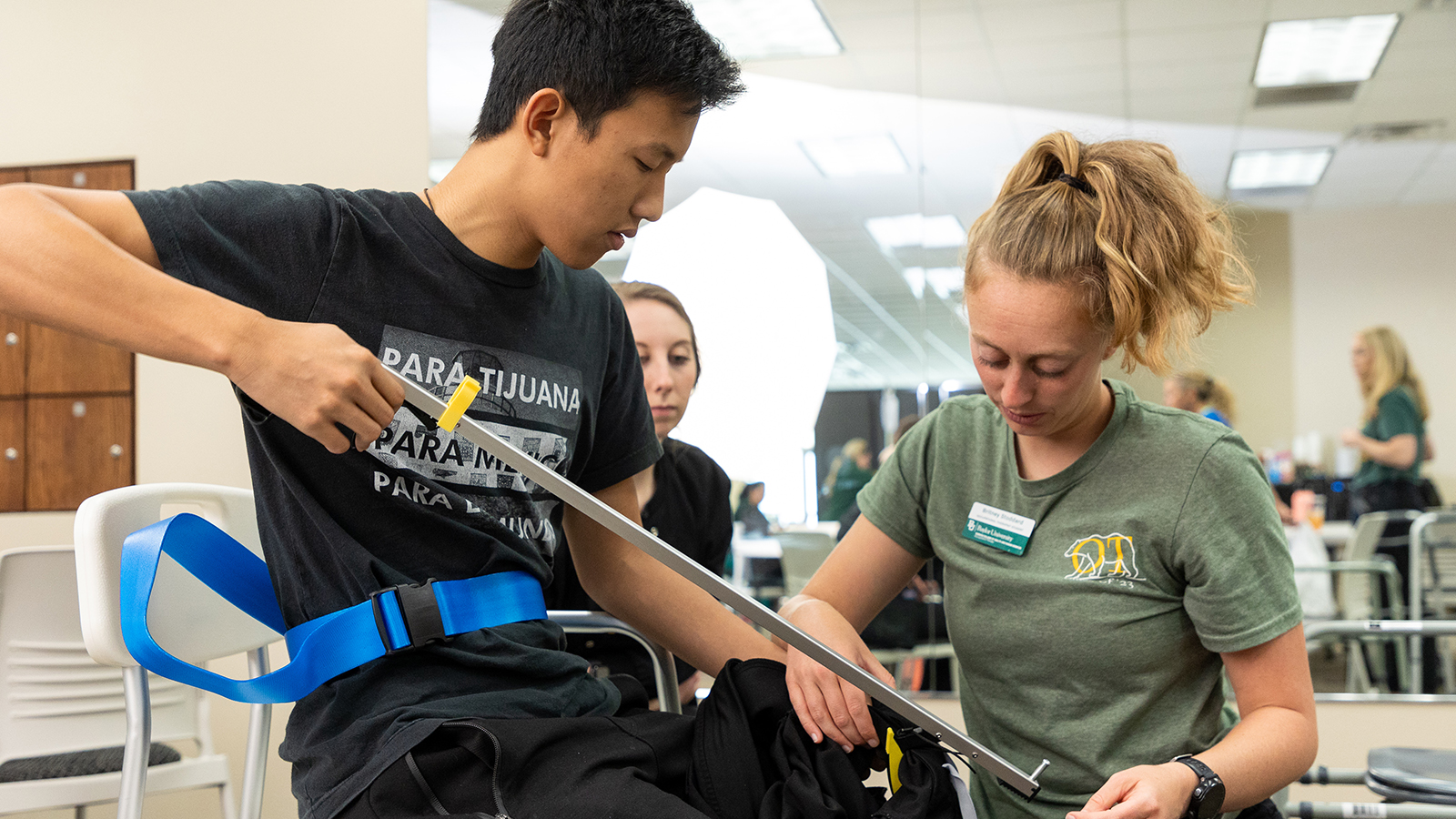Exploring the World of Occupational Therapy
What They Do, Where They Work, and How to Join this Vital Healthcare Profession

What is occupational therapy?
Are you looking for a career that allows you to make a meaningful impact on people's lives? Look no further than occupational therapy.
Occupational therapy is defined as the therapeutic use of everyday life activities (occupations) to enable participation in roles, habits, and routines in the home, school, workplace, and community. Our Year Two OTD students describe it best:
- "Occupational therapy is about helping people engage in meaningful life tasks."
- "We promote health, wellness, and rehabilitation by using occupation-based treatment plans."
- "We work with people of all ages who have illnesses, injuries, disabilities, or problems that affect their ability to perform daily tasks."
Occupational therapy practitioners help clients address physical, cognitive, sensory, environmental, and emotional challenges that may affect their ability to perform daily tasks. By harnessing the power of engagement in human occupation, we empower our clients to achieve their goals and improve their quality of life.
What does an OT do?
"What don't OTs do?" That's what Dr. Jose Rafols, Clinical Assistant Professor in Baylor University's Doctor of Occupational Therapy program, said when we asked him to describe what occupational therapists do. He highlighted two factors that make this profession unique: a holistic approach to healthcare and diverse practice areas.
According to Dr. Rafols, occupational therapists treat both the physical and psychosocial aspects of the individual to help them return to whatever they want and need to do. They consider where the individual is in their lives and what skills they need to be successful. Then, they look at the individual's abilities and determine how to best help them succeed.
OTs can work in a variety of traditional settings, including hospitals, outpatient clinics, schools, home health, and many more. But, they can also work outside of the traditional medical model, such as in sheltered facilities for women who have been battered or in advocacy roles for populations that cross the border and don't know how to get resources or integrate their culture within the United States. Others may work in private practice or in-home health independent of a medical system. Occupational therapists' experiences are as unique as the people they treat.
Who do occupational therapists work with?
The answer is people of all ages and stages in life. Occupational therapists can work as a generalist or specialize in working with various populations, including pediatrics, hand therapy, low vision, autism, caregiver training, driving and community mobility, physical rehabilitation, mental health, environmental modifications, geriatrics, and many more areas of practice.
Is occupational therapy a good fit for you?
According to Dr. Rafols, several qualities are important for prospective students: being caring, a lifelong learner, and having strong communication skills. If you enjoy helping people, are looking for a career in allied health, community practice, or related fields, and want a career where each day is as unique as the clients you will work with, then occupational therapy may be the perfect fit for you!
How do I get started?
To get started on your journey to becoming an occupational therapist, consider pursuing the nation's first two-year hybrid Entry-Level Doctor of Occupational Therapy (OTD) program at Baylor University. You'll complete your coursework remotely and then come to campus periodically for intensive lab immersions to gain the hands-on skills needed to become an occupational therapy practitioner.
Join us in the rewarding field of occupational therapy and make a lasting impact on individuals and communities.